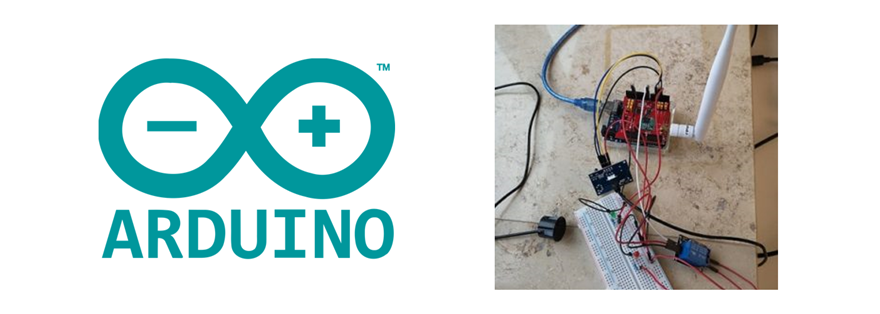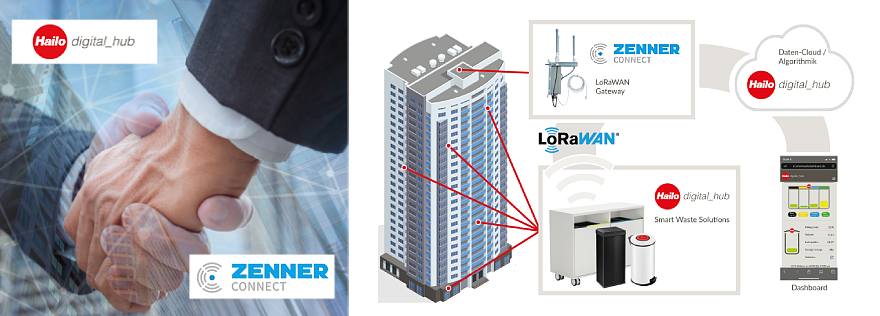Storage Media in Computer Hardware | IT Hardware Solutions
In the rapidly advancing world of information technology, the term Storage Media holds great importance. It refers to the various devices and technologies used to store, retrieve, and manage data in both consumer and enterprise systems. Whether it’s a personal computer, data center, or cloud infrastructure, storage plays a crucial role in the efficiency and reliability of IT Hardware. As data becomes the foundation of digital operations, understanding the types, evolution, and role of Storage Media in Computer Hardware is essential for anyone involved in the tech ecosystem.
This comprehensive article explores what Storage Media is, its classifications, how it integrates with Computer Hardware, and the latest trends shaping the future of storage technology.
1. What is Storage Media?
Storage Media is any physical material or device that stores digital data. It provides a means to retain information either temporarily or permanently, making it accessible for computing processes. In essence, it acts as the memory bank of modern computing devices, supporting operations ranging from system booting to running applications and maintaining databases.
The term encompasses several types of storage technologies—each with distinct performance, capacity, and reliability characteristics. From early magnetic tapes to high-speed solid-state drives, Storage Media continues to evolve to meet the growing demand for faster data processing and larger capacity.
In IT Hardware, storage is categorized into two main types:
Primary Storage (volatile memory like RAM)
Secondary Storage (non-volatile storage such as HDDs, SSDs, and flash drives)
The secondary storage media are particularly vital because they retain data even after power is turned off, making them indispensable in both personal and enterprise-level Computer Hardware systems.
The Evolution of Storage Media
The journey of Storage Media began with magnetic tapes used in the 1950s. As computing needs expanded, so did the demand for better performance, reliability, and storage density.
a. Magnetic Tapes
Magnetic tape was among the earliest forms of storage, primarily used for backup and archival purposes. While its access time was slow, it offered vast capacities for sequential data storage.
b. Floppy Disks
Introduced in the 1970s, floppy disks allowed users to store and transfer small amounts of data conveniently. They marked the beginning of portable storage media in personal computing.
c. Hard Disk Drives (HDDs)
HDDs revolutionized Computer Hardware by providing large storage capacities and relatively fast data retrieval. Over the decades, HDD technology evolved from megabyte-level drives to multi-terabyte solutions.
d. Optical Media
The 1990s saw the rise of optical storage—CDs, DVDs, and Blu-ray discs—allowing users to store audio, video, and software conveniently. These media became popular for entertainment and data backup.
e. Flash Memory and Solid-State Drives (SSDs)
Flash storage brought a paradigm shift in the IT Hardware industry. SSDs replaced traditional spinning drives by offering faster speeds, greater durability, and energy efficiency. The absence of mechanical parts reduced latency and improved overall system performance.
f. Cloud and Virtual Storage
The 21st century introduced cloud-based Storage Media, shifting data storage from local devices to remote servers. This transformation enabled scalability, remote access, and redundancy, making it the backbone of modern enterprise Computer Hardware systems.
Types of Storage Media
a. Magnetic Storage
Magnetic storage devices, such as Hard Disk Drives and Magnetic Tapes, use magnetic fields to represent binary data. They remain popular for large-scale storage and backup purposes due to their cost-effectiveness.
Examples:
Hard Disk Drives (HDDs)
Magnetic Tape Cartridges
Zip Drives
Advantages:
High capacity
Cost-efficient for bulk storage
Long-term data retention
Disadvantages:
Slower access times compared to SSDs
Mechanical wear and tear
Optical Storage
Optical media use lasers to read and write data. These include CDs, DVDs, and Blu-ray discs, commonly used for multimedia storage and software distribution.
Examples:
CD-ROM
DVD-RW
Blu-ray Disc
Advantages:
Ideal for backups and distribution
Long shelf life if stored properly
Disadvantages:
Slower read/write speeds
Limited capacity compared to modern SSDs
Solid-State Storage
Solid-state drives (SSDs) and flash memory represent the modern era of Storage Media. They use NAND-based flash memory instead of magnetic or optical methods.
Examples:
SSDs (SATA, NVMe)
USB Flash Drives
Memory Cards
Advantages:
Lightning-fast speed
Energy efficient
Shock-resistant and reliable
Disadvantages:
Higher cost per gigabyte
Finite write cycles
Cloud Storage
Cloud-based Storage Media allows users to save data on remote servers managed by service providers. This virtualized storage form is central to modern IT infrastructure.
Examples:
Google Drive
Dropbox
Amazon S3
Advantages:
Scalability
Accessibility from any location
Automatic backups and synchronization
Disadvantages:
Dependent on internet connectivity
Potential security and privacy concerns
Hybrid Storage Systems
Hybrid systems combine SSDs for performance and HDDs for capacity, achieving a balance between speed and cost. Such configurations are common in modern Computer Hardware, especially in gaming systems and enterprise servers.
Importance of Storage Media in IT Hardware
Storage Media plays a fundamental role in the architecture and functionality of IT Hardware. From personal computers to complex data centers, every system relies on efficient data storage mechanisms for smooth operation.
Data Retention and Accessibility
Storage media ensure that all system data, including the operating system, applications, and user files, remain available for future use. Reliable storage prevents data loss and ensures operational continuity.
System Performance
Faster Storage Media—such as NVMe SSDs—significantly enhance computer performance. Reduced latency leads to quicker boot times, faster file transfers, and smoother application operation.
Scalability and Flexibility
In enterprise environments, storage scalability is crucial. Modern Computer Hardware configurations can easily integrate additional drives or cloud solutions to accommodate growing data needs.
Backup and Recovery
Storage media serve as a foundation for data backup strategies. Organizations use a combination of local and remote storage devices to ensure data protection and disaster recovery.
Energy Efficiency
Modern IT Hardware increasingly prioritizes energy-efficient components. SSDs consume less power than traditional HDDs, contributing to greener computing solutions.
Role of Storage Media in Computer Hardware
Storage in Personal Computers
For home and office PCs, Storage Media mainly includes HDDs and SSDs. The choice between them depends on user requirements—speed versus capacity. SSDs are preferred for operating systems, while HDDs store large files.
Storage in Enterprise Servers
Enterprise-grade Computer Hardware relies on RAID arrays, NAS (Network Attached Storage), and SAN (Storage Area Network) systems for redundancy and reliability. These systems ensure that data remains secure and accessible 24/7.
Storage in Data Centers
Modern data centers integrate thousands of drives, combining HDDs for capacity and SSDs for performance. Cloud computing giants use distributed Storage Media solutions to handle massive amounts of data efficiently.
Storage in Embedded Systems
Embedded systems—such as IoT devices, routers, and industrial controllers—use compact storage solutions like eMMC and SD cards, balancing space constraints with reliability.
Storage in Gaming and Multimedia Systems
Gamers and content creators demand high-speed storage for large applications and quick access times. NVMe SSDs have become the standard for gaming rigs and professional multimedia workstations.
Latest Trends in Storage Media Technology
NVMe and PCIe Gen 5 SSDs
The adoption of NVMe technology revolutionized SSD performance. PCIe Gen 5 drives now deliver speeds exceeding 12 GB/s, making them vital for high-end IT Hardware systems.
3D NAND and QLC Memory
Advancements in NAND flash technology have increased storage density. 3D NAND stacks multiple layers of memory cells, offering larger capacities at reduced costs.
Cloud and Edge Storage
Edge computing combines cloud flexibility with localized processing. Hybrid cloud-edge Storage Media systems optimize data handling and reduce latency for real-time applications.
DNA and Holographic Storage
Although still experimental, DNA storage and holographic storage represent the future of data preservation, promising petabyte-scale capacities within microscopic spaces.
Data Security and Encryption
With data breaches on the rise, modern Computer Hardware integrates encryption mechanisms directly into storage controllers to ensure data protection at rest and in transit.
Choosing the Right Storage Media
Selecting appropriate Storage Media depends on several factors such as performance requirements, budget, and intended use.
For Home Users
A combination of SSD for OS and HDD for data storage is ideal. Cloud backup solutions can add redundancy.
For Businesses
Enterprises benefit from hybrid systems—SSDs for active databases and HDDs for archival storage—supported by robust backup strategies.
For Data Centers
High-capacity HDD arrays, SSD caching, and cloud-based redundancies ensure performance and reliability.
For Developers and Gamers
High-speed NVMe SSDs provide reduced load times and enhanced multitasking capabilities.
For Mobile Devices
Compact flash memory and eMMC storage balance capacity and energy efficiency for mobile computing.
Maintenance and Data Management
To ensure the longevity and performance of Storage Media, proper maintenance and management are essential.
Regular Backups: Maintain multiple copies of critical data.
Defragmentation (for HDDs): Optimize file placement for quicker access.
Firmware Updates: Keep drives updated for stability and performance.
Health Monitoring: Use tools like SMART (Self-Monitoring, Analysis, and Reporting Technology).
Data Encryption: Secure sensitive information from unauthorized access.
The Future of Storage Media
The future of Storage Media lies in increasing capacity while reducing physical size and power consumption. Technologies like Optane Memory, Zoned Storage, and Quantum Storage are emerging to redefine data management.
With the explosion of AI, IoT, and big data, global data creation is expected to exceed 180 zettabytes by 2025. This drives continuous innovation in IT Hardware and Computer Hardware design, making storage solutions faster, denser, and smarter.
Soon, traditional drives will coexist with intelligent, self-optimizing storage units capable of adapting dynamically to workloads and data types.
Conclusion
Storage Media forms the backbone of modern Computer Hardware and IT Hardware systems. From the magnetic tapes of the past to the lightning-fast NVMe SSDs and cloud platforms of today, storage technology continues to evolve in capacity, performance, and reliability.
Every digital operation—from gaming to enterprise cloud computing—depends on efficient Storage Media. Understanding its types, applications, and innovations helps individuals and organizations make informed decisions, optimize system performance, and safeguard valuable data.
In the coming years, as data continues to grow exponentially, Storage Media will remain a cornerstone of technological progress, bridging the gap between information and innovation.
Empfehlen0 EmpfehlungenVeröffentlicht in Allgemein







Kommentare